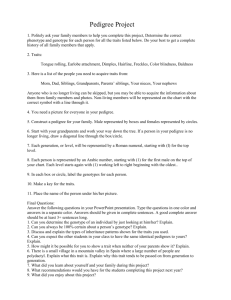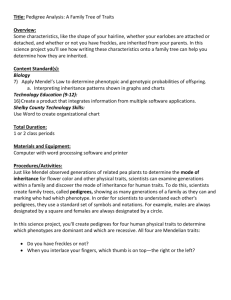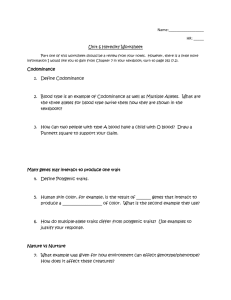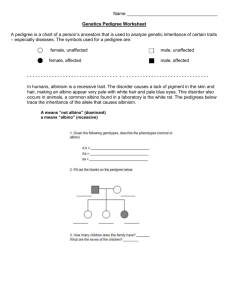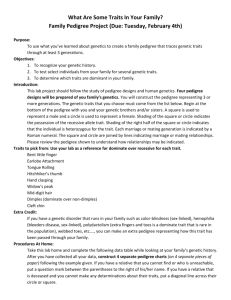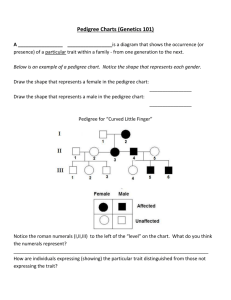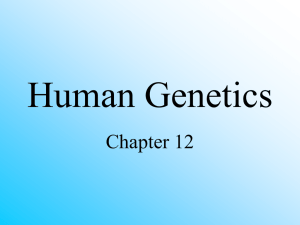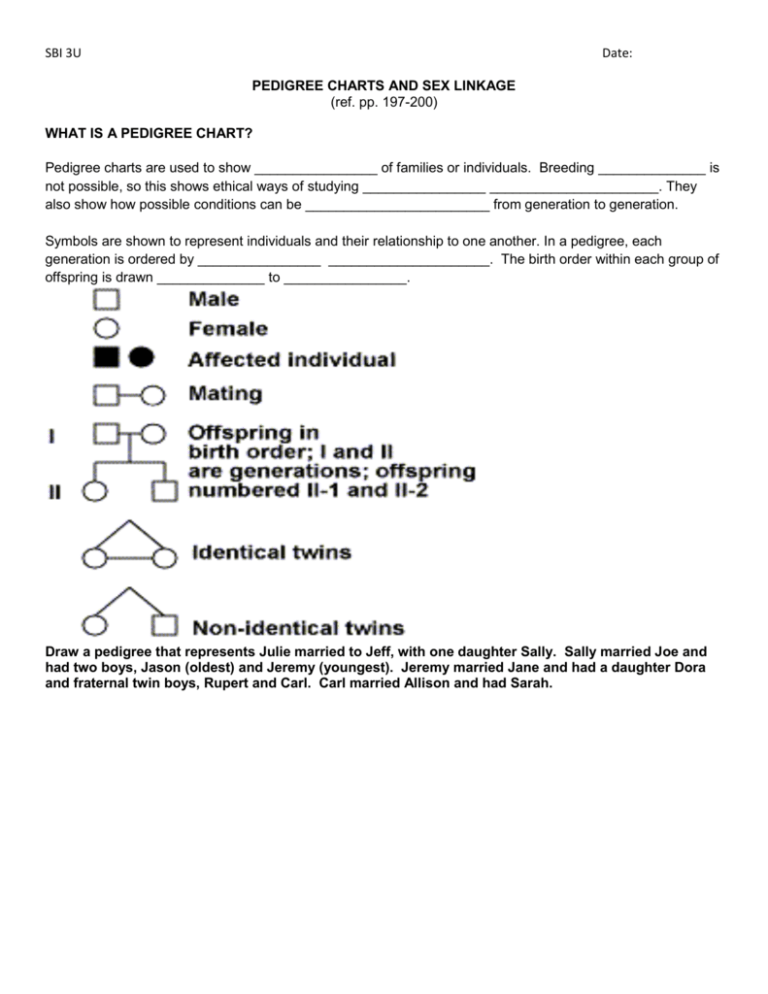
SBI 3U
Date:
PEDIGREE CHARTS AND SEX LINKAGE
(ref. pp. 197-200)
WHAT IS A PEDIGREE CHART?
Pedigree charts are used to show ________________ of families or individuals. Breeding ______________ is
not possible, so this shows ethical ways of studying ________________ ______________________. They
also show how possible conditions can be ________________________ from generation to generation.
Symbols are shown to represent individuals and their relationship to one another. In a pedigree, each
generation is ordered by ________________ _____________________. The birth order within each group of
offspring is drawn ______________ to ________________.
Draw a pedigree that represents Julie married to Jeff, with one daughter Sally. Sally married Joe and
had two boys, Jason (oldest) and Jeremy (youngest). Jeremy married Jane and had a daughter Dora
and fraternal twin boys, Rupert and Carl. Carl married Allison and had Sarah.
SBI 3U
Date:
Sex Linkage:
Humans have __________ pairs of chromosomes – 22 _______________ pairs, and 2 sex chromosomes.
Male sex chromosomes: ____ _______ and Female: _______ ________.
Autosomal Inheritance: Both males and females affected equally. WHY?
Sex Linked Traits:
Traits located on the X or Y chromosome. Traits are mostly located on the _________ chromosome, because
there is rarely a match for ________. These traits follow ______________________ and
_____________________________ rules.
Rules for Inheritance:
Mothers pass X- linked traits to ___________ and ______________________. Fathers pass X – linked traits
to ______________________ only. Recessive traits will ___________________ be expressed in males. In
females recessive traits will only be expressed when they are ______________________________.
Prove it with a punnet!
Common sex-linked diseases in humans are ____________________________ and
_____________________________.
SBI 3U
Date:
Dominant Trait Pedigree
Characteristics of a Dominant Pedigree:
1) Affected individual has at least one affected parent
2) Affected individuals who mate with unaffected individuals have a 50% chance of transmitting the trait to
each child
3) Two affected individuals may have unaffected children
Recessive Trait Pedigree
Characteristics of Recessive Pedigrees:
1) An individual who is affected may have parents who are not affected
2) All the children of two affected individuals are affected
3) In pedigrees involving rare traits, the unaffected parents of an affected individual may be related to
each other
SBI 3U
Date:

